26+ Resignation Letter Examples Examples to Download
There are many reasons why an employee would want to leave their current position in a company or business. When an employee will leave it is the proper procedure to provide the employer with a resignation letter.
Director Resignation Letter Template
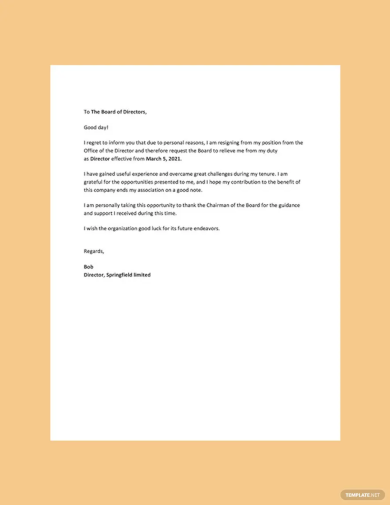
Resignation Letter Template for Personal Reason
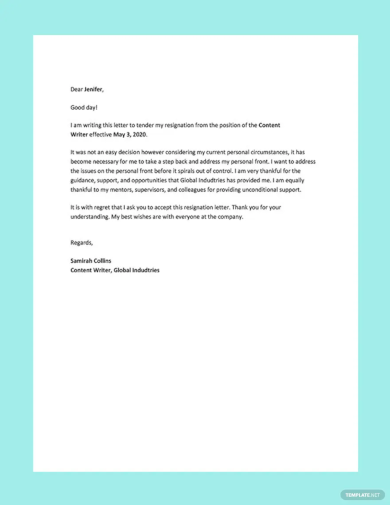
Nurse Resignation Letter Template
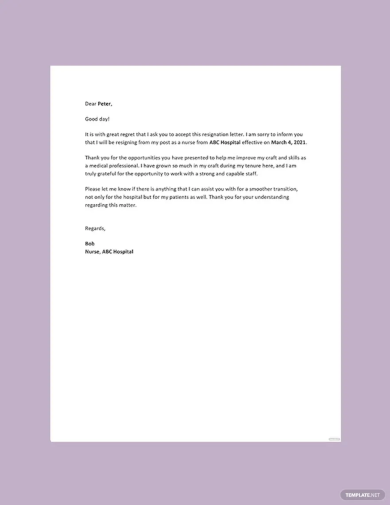
Immediate Resignation Letter Template
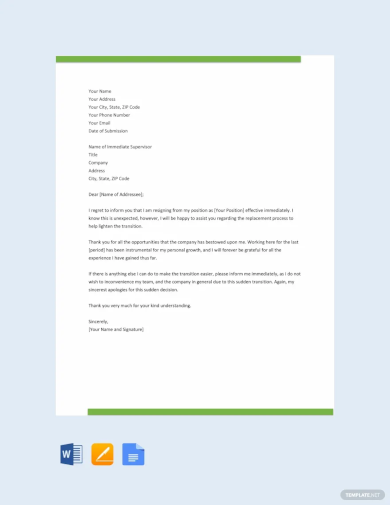
Simple Resignation Letter Template
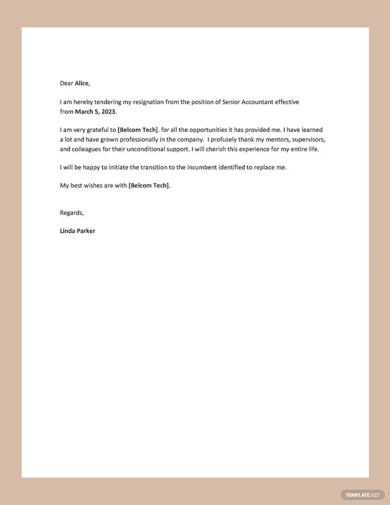
Work Resignation Letter Template
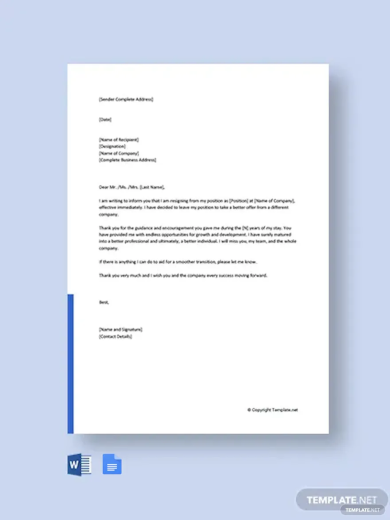
Two Weeks Notice Resignation Letter Template
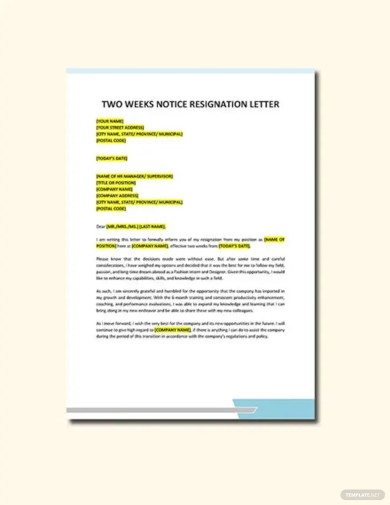
Employee Resignation Letter Template
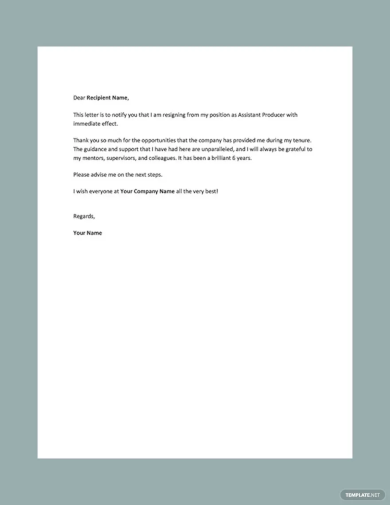
Formal Resignation Letter Template
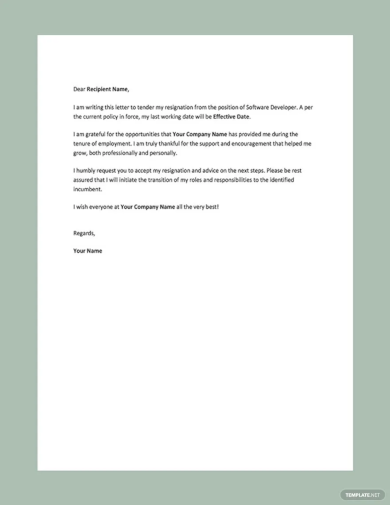
Resignation Letter Format Template
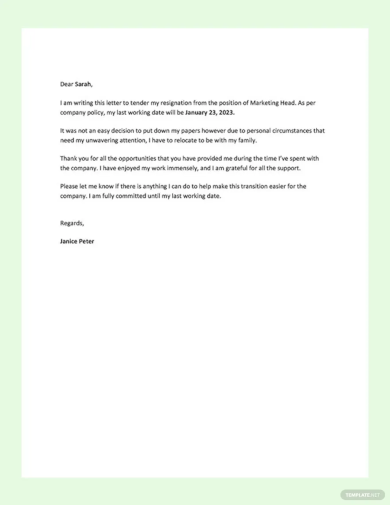
Heartfelt Resignation Letter Template
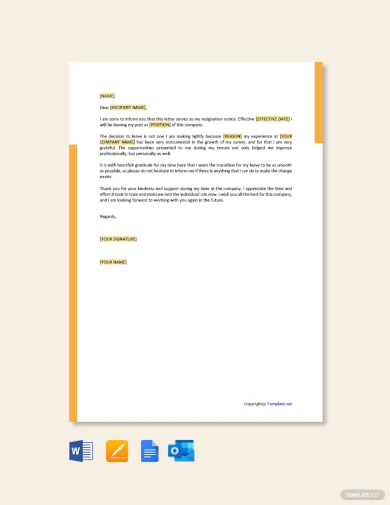
Professional Resignation Letter Template
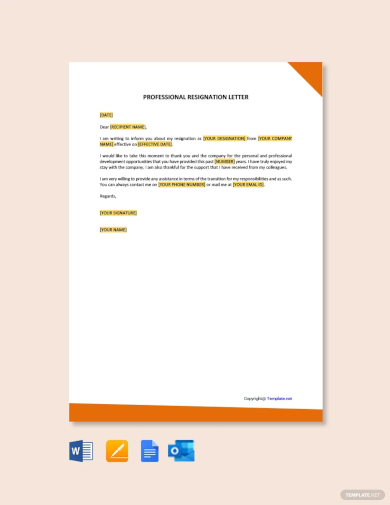
Immediate Resignation Letter Due to Stress Template
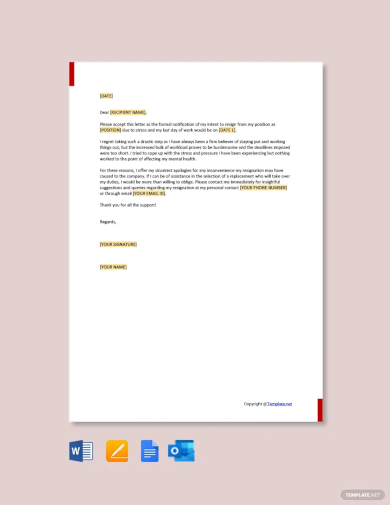
Early Retirement Resignation Letter Template
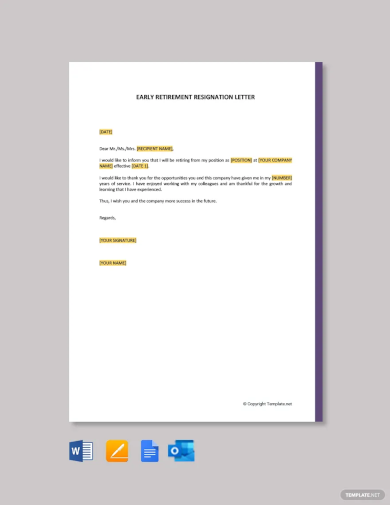
Executive Director Resignation Letter Template
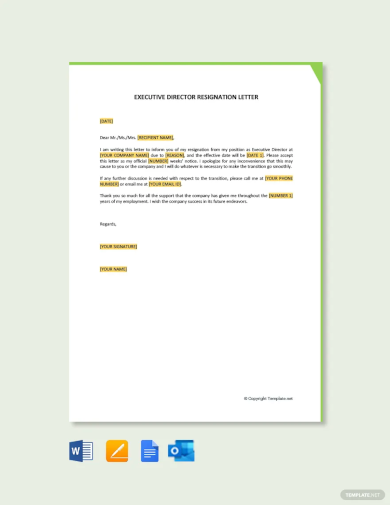
Resignation Letter For Company Template
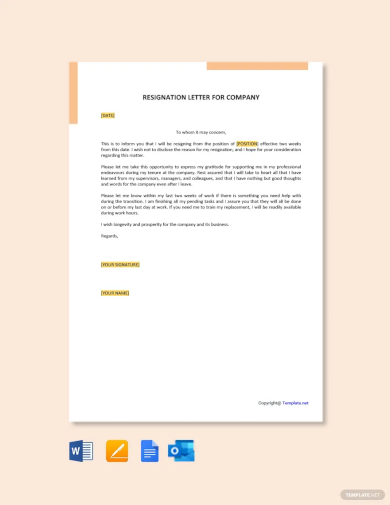
Resignation Letter to Boss Template
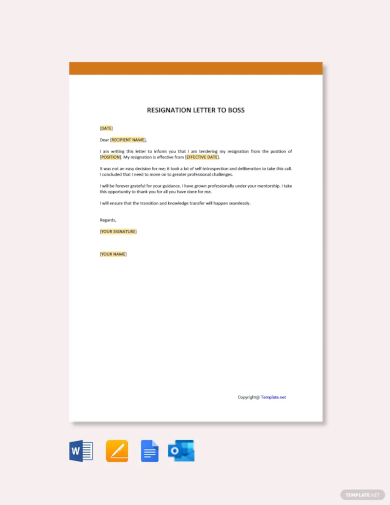
Resignation Letter to Company Template
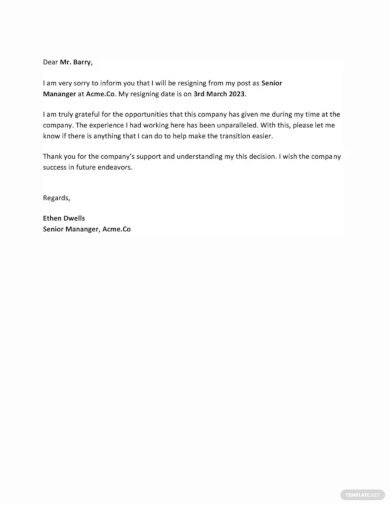
Resignation Letter to Client Template
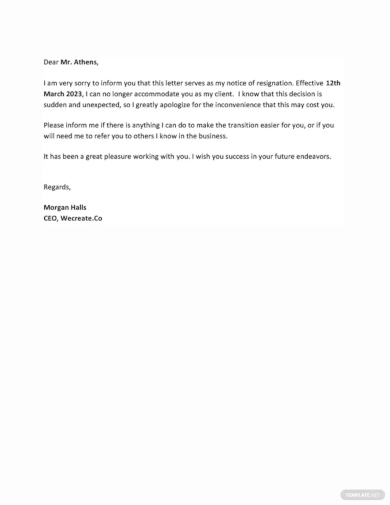
Resignation Letter Template for Career Growth
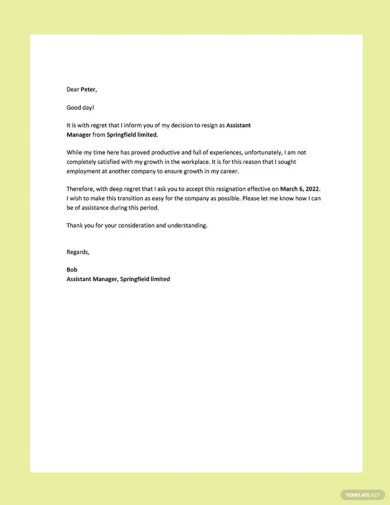
Resignation Letter Template Due to Study
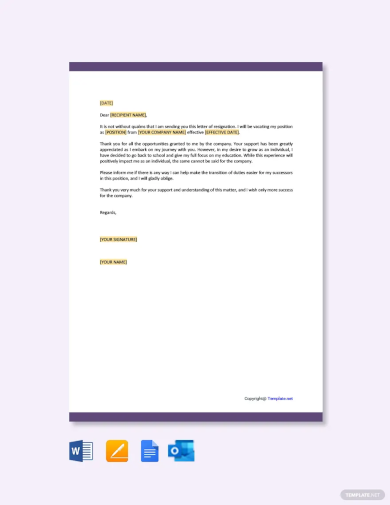
Resignation Letter Template Due to Travel
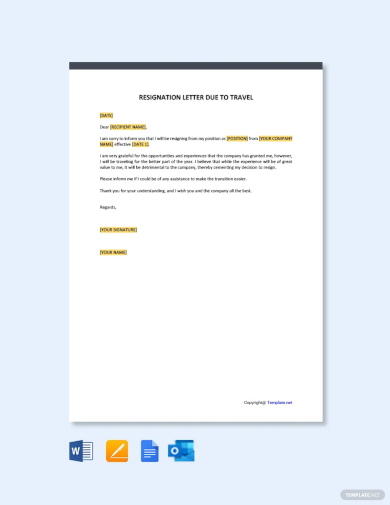
Resignation Letter Template Due to Health Issues
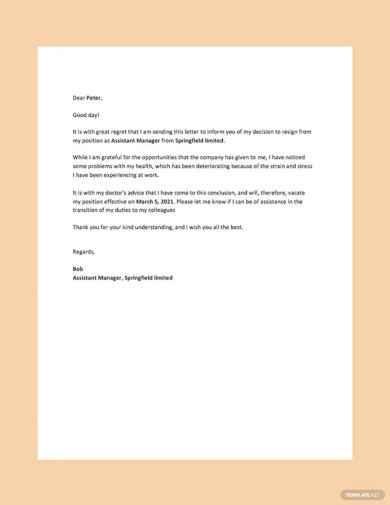
Resignation Letter Template due to Pregnancy
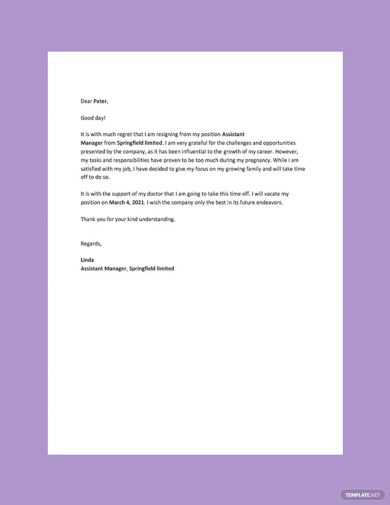
Resignation Letter Template for Teacher
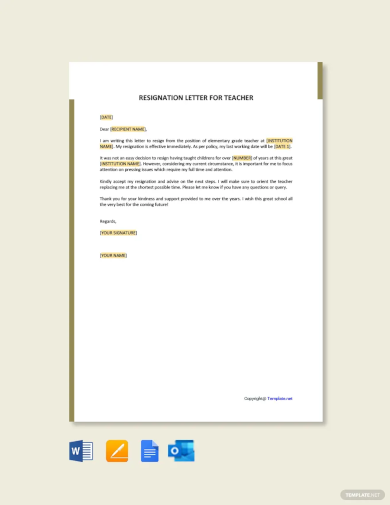
What Is a Resignation Letter
A resignation letter is a formal business letter that informs the employer of the employee’s intention to resign from their profession or position. This letter’s objective allows the employee to explain and provide information and elements pertaining to the employee’s intention to resign.
How to Write a Resignation Letter
A well-written resignation letter will allow the person to peacefully leave the business or company without any issues propping up. If you need a resignation letter example, a resignation letter template, or a resignation letter sample, then you may use any of the links above.
Step 1: Write the Date and Properly Address the Letter
Begin by properly writing the date of the letter’s top left corner if needed be sure to write the letter address on the letter envelope or the envelope proper. Be sure to address or list the correct and appropriate person for the letter.
Step 2: Outline the Resignation Letter
If you have the time, you may opt to write or create an outline to provide a direction for the letter. Be sure to keep a consistent professional tone throughout the letter.
Step 3: Create the Introduction Paragraph
The first portion of your letter should be a concise and brief paragraph that will indicate your intention to resign from your current position. Write your introductory paragraph within three to five sentences.
Step 4: Provide the Last Date of Your Employment and Other Things You Can Offer
Another important part you will need to provide or list is the last date of your employment. This will not only allow your boss to disseminate your tasks but will also ensure that your spot will be filled. You can also offer feedback both positive and negative to your employer.
Step 5: Sign Your Letter
You will need to sign your letter as a way to ensure that your letter is official. You should also provide your contact information as a way for your employers to contact you after your resignation.
FAQs
Resignation letter vs. 2-week notice; what is the difference between a resignation letter and a 2-weeks notice?
A resignation letter is a type of document one will pass to HR to signify one’s intent to resign from their current position. The resignation letter’s effectiveness is very flexible, as it can come into effect on the day the person sends or drops their resignation letter. A 2-weeks notice, on the other hand, does not completely act as an antithesis or juxtaposition of the purpose of the resignation letter. This document/letter instead indicates to the employer or HR that a person will resign from their job in the span of 2-weeks. This will allow the employer to react to one’s resignation and will allow them to converse and plan about the future of both the employee and position under various contexts. In conclusion, both the resignation letter and the 2-week notice will indicate the person’s peaceful resignation from the company but have a different timespan.
Why is it important to provide a resignation letter when you are leaving the company or business?
A resignation letter allows you to properly and peacefully depart from your current position while allowing the company or business to react to your resignation. This will not only help illustrate one’s professionalism in the workplace, but it will also ensure that all the grievances can be aired out during the period set by the sender of the letter. By sending a resignation letter, one can effectively maintain a positive attitude and rapport with the company or business. Therefore it is important to send a resignation letter before you will properly resign from your position.
Can one’s boss prevent your resignation?
No, the ability to resign from one’s job or position is within the employee’s rights and cannot be denied or declined by one’s employer. This is because one’s resignation is the person’s choice, which cannot be vetoed by the employer. When an employer prevents their employee from resigning they are held liable for a criminal act and can be sued for damages. In conclusion, one’s boss cannot prevent their employee’s resignation.
The resignation letter is a type of letter one will send when one wishes to resign or leave their position. A well-written resignation letter can provide a succinct and brief statement that will allow the employee to resign in a more professional and peaceful context.


